Iconography
We’ve talked before about symbolism and how it can be used in the analysis of a piece, but today we want to look a little closer at the concept of iconography, the study of the context of images separate from their style. An image contains so much information, especially one that was crafted by an artist, and the same can be said of any of the works that we would like to analyze. If something is included on screen or in the page, then it as put there by someone intentionally. There is a reason that it exists, even if that reason is a s simple as to add clutter to the background.
When we look at a work, the style has a great deal of influence over the meaning that can be taken from it. With a painting, this could simply be the color chosen or the thickness of lines, or so many other more complex things. Compare cubism to realism, and you can see so much difference even if the paintings are of the same subject. Read More…
Anatomy of a Character - Nightcrawler
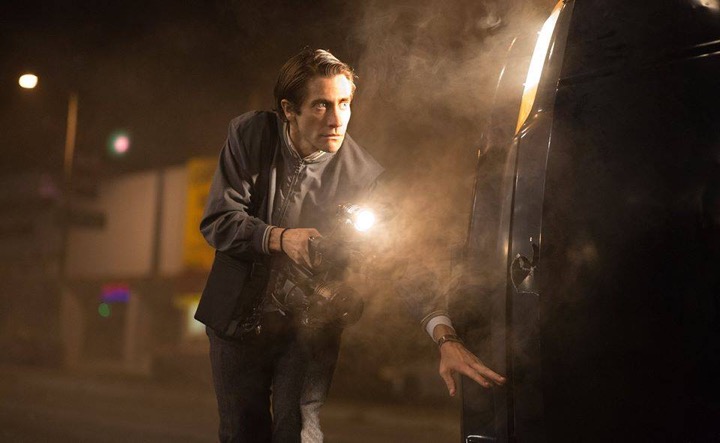
It is hard to describe what “creepiness” is, the feeling of existential dread that it fosters deep within you, an inability to look away in fear of what might happen if you do, an uncertainty of what exactly is going on. And it’s a feeling that the oddly stoic Gyllenhaal nails to a T with the character of Lou Bloom. From the moment that he is introduced until the credits roll, he demands your attention, much in the same way as a wild animal or poisonous insect, calmly watching you back, his wide eyes searching for weakness.
From the moment that he is introduced to us, we watch him try to approximate normal human behavior. Behind his smiling mask, there is an anger simmering just below the surface. But the scariest part about him is not this rage. It is that this anger might just be another mask, trying to pass for normal human emotions.
Light vs. Dark
One of the central and most widely used theses in literature is the idea of a battle between good and evil. It could be waged with blades and bullets, or through a battle of sharp wits and razor tongues. These two sides clash over and over, and so many times we will see them indicated by the idea of light versus darkness. Light is good, virtuous and just. It is pure, an angel decked out in gleaming white robes, or a doctor in an unblemished gown. Darkness is sinister, violent and evil. It is corrupt, an ashen demon eager to tear apart all who stand in its way or as an assassin wreathed in a dark suit.
It has always served as an easy way for us to distinguish between what is “good’ and what is “bad”, but with this compartmentalization and labeling come rather entrenched ideas of racial relationships and dynamics. For a long time, societies have looked upon pale and white skin as being better than darker skin. You can see comparisons being draw between dark skin and “dirtiness” or lack of civilization. It ties closely into the idea of otherness that we’ve talked about before, and it has roots in centuries of literary history. Read More…
The Appearance of Heroes
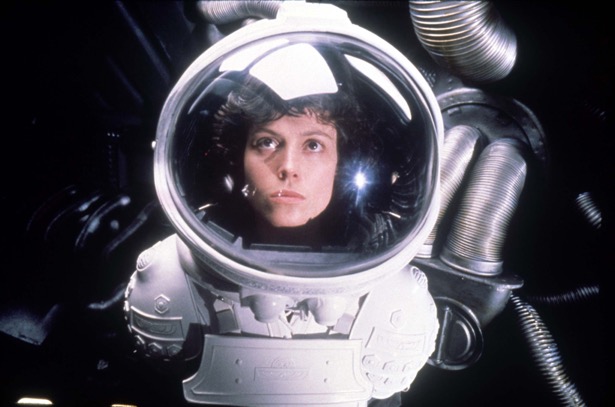
If you are an avid consumer of media, you might have noticed a few things. We write a lot about common tropes and themes that you encounter so you can begin to notice more details. So let’s do a small exercise: when you picture a hero, what do you see? Strong, virtuous, noble, upstanding. Or it is a generic white guy with five o’clock shadow and a set of rocking abs.
For some reason, a lot of our heroes look remarkably similar. Handsome, male, in-good shape, well-dressed, etc. And over the years, this image has changed slightly. It’s why a Victorian era hero looks different than the massive bodybuilders that were 80’s action heroes, and the slightly older, bearded men of today. But some things have stayed the same regardless: the fact that our heroes are overwhelmingly male, white, and heterosexual.
The Other
We’ve talked about the Other and bothering before, but it is a topic that deserves further examination. The Other is all about setting up the relationship within a story, about creating conflict and division. And it can be used in multiple different ways. It is a rather simple idea as well. The other is different. They don’t belong. They are strange and don’t fit in for some reason. It could be any number of things: their race, gender, sexuality, nationality, religion, class, species. Anything that differentiates them from the norm as defined by the story and it’s protagonists. Read More…
Explication – Holy Sonnet #10
Death, be not proud, though some have called thee
Mighty and dreadful, for thou are not so;
For those whom thou think’st thou dost overthrow
Die not, poor Death, nor yet canst thou kill me.
From rest and sleep, which but thy pictures be,
Much pleasure; then from thee much more must flow,
And soonest our best men with thee do go,
Rest of their bones, and soul’s delivery.
Thou’art slave to fate, chance, kings, and desperate men,
And dost with poison, war, and sickness dwell,
And poppy’or charms can make us sleep as well
And better than thy stroke; why swell’st thou then?
One short sleep past, we wake eternally,
And death shall be no more; Death, thou shalt die.
Explication is one of the simplest ways that we can analyze a piece. Put simply, it is a close reading, a deep look into a text to see what surfaces. This can take on a number of different forms, depending on the media that is being analyzed, from a line by line reading of a poem or song (like the one that we are going to be looking at today), to detailed character analyses from a movie or book, to an examination of a particular chapter or section (like our ongoing Anatomy of a Film) series. Today we are going to look at John Donne’s Holy Sonnet #10 and the themes of death and afterlife that it contains. Read More…
The Tragic Hero
When we are looking at the construction of a character, it can help to understand some of the basic archetypes that many authors pull from. We recently talked about Shakespeare as a cultural touchstone, and if we look at many of his plays, we can find evidence of a “tragic hero”. The tragic hero is an age old character archetype describes by Aristotle as:
“A man not pre-eminently virtuous and just whose misfortune, however, is brought upon him not by vice and depravity but by some error of judgement, of the number of those in the enjoyment of great reputation and prosperity; e.g. Oedipus, Thyestes, and the men of similar families. The perfect Plot, accordingly, must have a single, and not (as some tell us) a double issue; the change in the hero’s fortunes must be not from misery to happiness, but on the contrary from happiness to misery; and the cause of it must lie not in any depravity, but in some great error on his part; the man himself being either such as we have described, or better, not worse, than that.” (The Aristotelian Concept of the Tragic Hero) Read More…
Critical Touchstones
When reading a text, it is important to build out your toolkit, your set of references for how you look at a work. And while every person’s is different, there are a few tool that everyone should have in their arsenal. Texts reference ideas that they expect the reader to be at least partly familiar with, as the goal is to have the audience understand. There are a few broad cultural touchstones that we keep looking back to for our works: the Bible, and Shakespeare. Read More…
Do the Right Thing
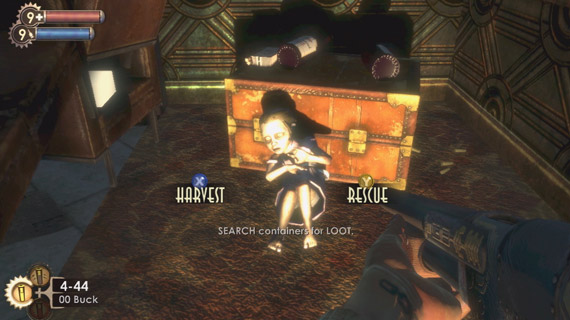
Moral choices have long been a part of gaming. They offer the chance for a player to leave their mark on a game, affecting the outcome and changing the course of a game. These binary, good vs. evil choices are so often structured in the same way. Evil choices are flashy and violent, giving you a small amount of short term gain in return for a karmic hit. Good choices then should be the opposite, giving up personal gain in exchange for doing the right thing. But this isn’t how they manifest. You are almost always rewarded for doing the “good” thing, and frequently the long term gains outweigh the gains from evil. The only real difference ends up being different achievements, or possibly some different dialogue at the end of the game.
Psychoanalytic Theory
As this site moves forward and we begin to introduce more complex topics it will become useful for us to give a primer in some of the themes and ideas that we are talking about. We've done a little bit of this already, but we will be digging in a little deeper into the topics in question. Death of the Critic is, at its heart, a critical website where we try to take a deeper look at different aspects of media. From movies to games to music and more, we aim to enhance the discussion around media in order to deepen our knowledge and understanding.
Let’s talk about schools of theory. When we critique, frequently we do so through a specific lens. Works can have a lot of meaning hidden deep within them, and if we aimed to fully analyze a book, movie, or game, we could easily fill an entire book. So we use these schools of theory as a way to focus in on one particular area of a work. This helps us hone in on a specific idea and expand upon it more fully than if we had tried to do a very broad reading. By centering on one aspect, the analysis becomes more clear and focused.
Read More…
Anatomy of a Scene - Chef
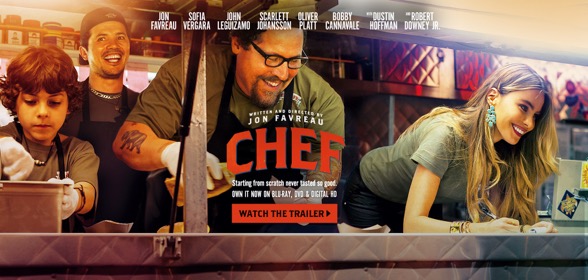
Sensuality is a difficult thing to portray. Making a man like Jon Favreau sexy is only adds onto the challenge. He falls well outside the lines of “conventional” good looks, especially those of Hollywood’s masculine ideals. But the scene where he cooks for Scarlett Johansson in his apartment is as sexy as any we’ve seen. It combines light and playful shots with loving attention to detail to bring you a veritable feast for the senses: aural, visual, and more, as you can almost smell and taste the pasta that he makes for her. It is a scene about simplicity in many ways, in the midst of a turning point for his character, foreshadowing the rest of the film, and perfectly encapsulating his passion as a chef.
Post-Colonial Theory
As this site moves forward and we begin to introduce more complex topics it will become useful for us to give a primer in some of the themes and ideas that we are talking about. We've done a little bit of this already, but we will be digging in a little deeper into the topics in question. Death of the Critic is, at its heart, a critical website where we try to take a deeper look at different aspects of media. From movies to games to music and more, we aim to enhance the discussion around media in order to deepen our knowledge and understanding.
Let’s talk about schools of theory. When we critique, frequently we do so through a specific lens. Works can have a lot of meaning hidden deep within them, and if we aimed to fully analyze a book, movie, or game, we could easily fill an entire book. So we use these schools of theory as a way to focus in on one particular area of a work. This helps us hone in on a specific idea and expand upon it more fully than if we had tried to do a very broad reading. By centering on one aspect, the analysis becomes more clear and focused. Read More…
What is Criticism?
As this site moves forward and we begin to introduce more complex topics it will become useful for us to give a primer in some of the themes and ideas that we are talking about. We've done a little bit of this already, but starting this week we will be digging in a little deeper into the topics in question. Death of the Critic is, at its heart, a critical website where we try to take a deeper look at different aspects of media. From movies to games to music and more, we aim to enhance the discussion around media in order to deepen our knowledge and understanding.
This begs the question: What exactly is criticism? Read More…
The Hero's Journey
We try to give our audience as strong of a background in the themes and ideas that we talk about in our essays. As we look at media of all types, we can see so many common themes that run through our canon, our comprehensive body of work. The more media that you start to consume, the more common threads that you will begin to notice. Perhaps the most common is that of the "Hero's Journey". In essence, the Hero's Journey is a quest that a main character goes through to undergo some kind of personal growth. Harboring deep ties to Arthurian legend, you can see the same set of plot points and character archetypes instilled in so many of the stories that we tell.
You have your main character. Maybe they are a noble knight, or a chosen warrior, or some kid who doesn't quite know their place in the world. They have a specific goal: conquering a dungeon, defeating a dragon, or just talking to a pretty girl in gym class. All along the way they are faced with challenges that stimulate the growth of the character not only in strength of body, but also of character. It is the classic coming of age tale that is told in so many ways by so many different people. Read More…
Anatomy of a Character - Pulp Fiction
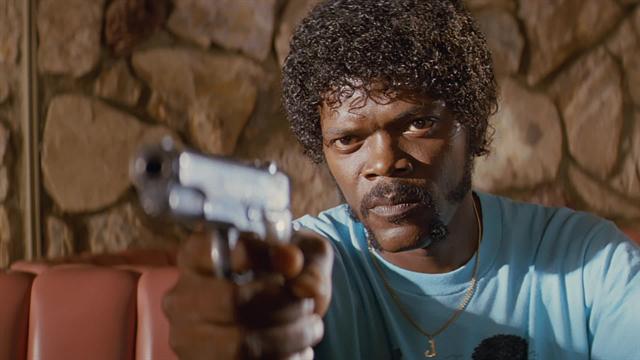
Repetition is a powerful thing, and showing cycles can lead to powerful implications.
Pulp Fiction is one of my favorite movies of all time. There is something about the characters and dialogue that clicks together and works in a way that many films strive to achieve.it is a set of very strange people all caught up in some of the most eventful and important days of their lives. And in the center of this maelstrom, we have Jules, the fast-talking, bible-quoting, gun-toting hitman with a soft spot for cheeseburgers. In many ways, the entire movie revolves around the character arc of Jules and how he changes throughout the film.
Male Gaze
When we talk about the depiction of sex and sexuality, frequently the idea of the “Male Gaze” comes up, mostly in regard to female characters and their depiction. At its heart, it’s a rather simple concept, but it can reveal a lot about the intended audience of a piece and of who made it. The Male Gaze is how a scene is portrayed specifically to be attractive to a heterosexual, male audience. It’s designed to appeal to men, and it is evidenced through the difference in depictions of straight male characters, straight female characters, and lesbian female characters and their relationships in media. Read More…
Anatomy of a Scene - Jarhead
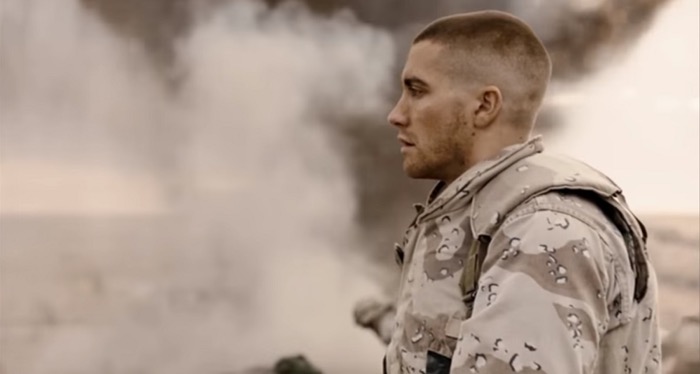
This is my rifle. There are many like it, but this one is mine.
My rifle is my best friend. It is my life. I must master it as I must master my life.
Without me, my rifle is useless. Without my rifle, I am useless.
Tokenism
As a follow-up to our discussion on the Noble Savage, I wanted to take the time to talk about the delicate issue of tokenism in contemporary media or literature. Put simply, Tokenism is the idea of diversity being included for show, of including minority characters in minor roles such that a single minority character has to represent the entirety of their group.
In less malicious contexts, this can take the shape of something that you might see on a brochure, a “multicultural” group of people that are diverse in appearance only. These characters are not allowed to express themselves in a way that would significantly differentiate them from the norm (read: white and straight). It is a way for studios to brag about embracing diversity without actually doing anything of substance. Read More…